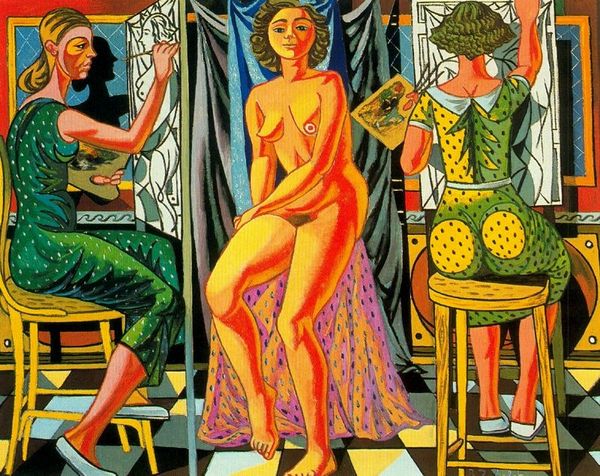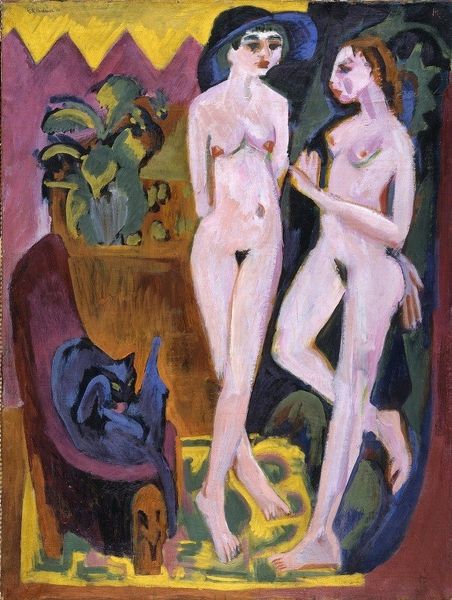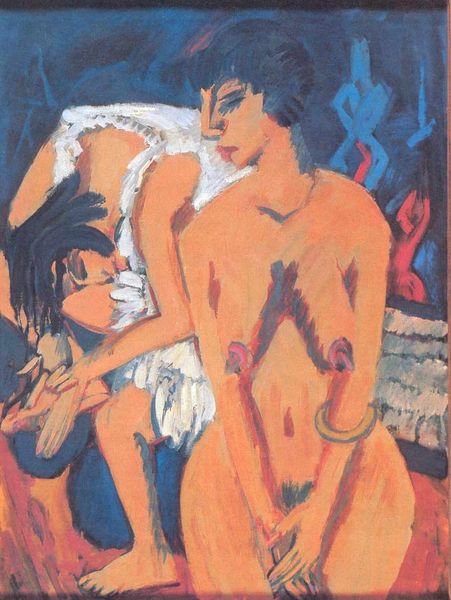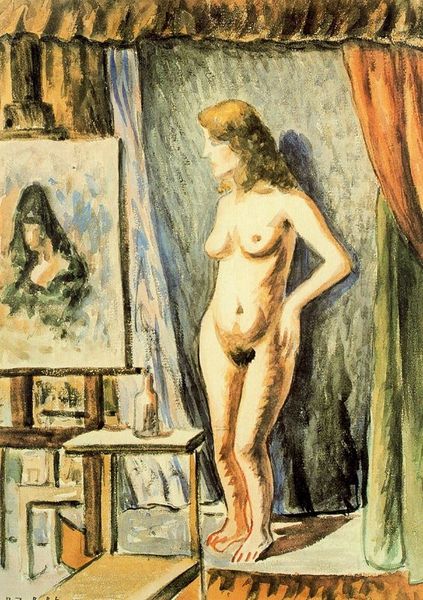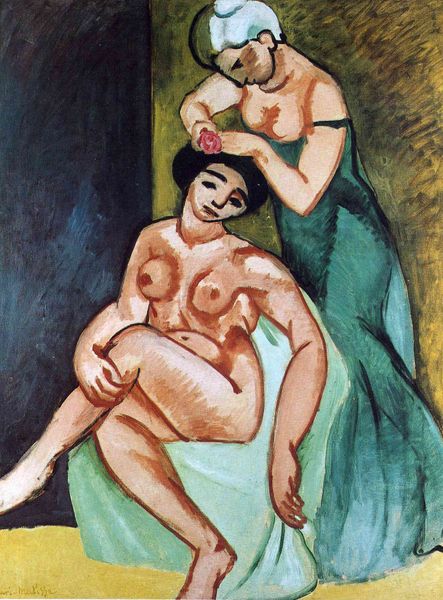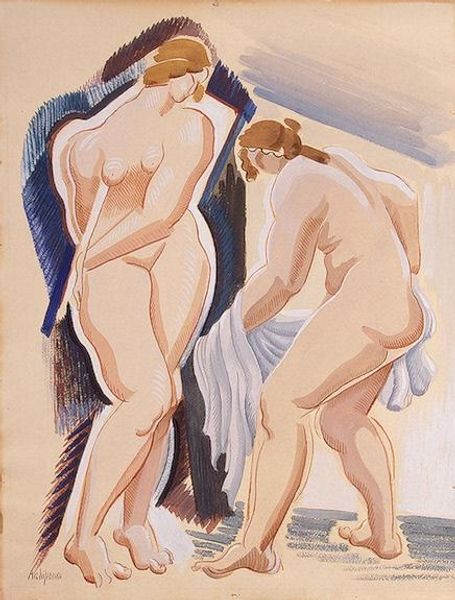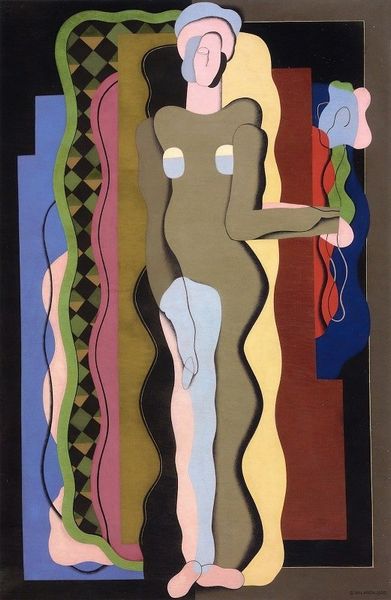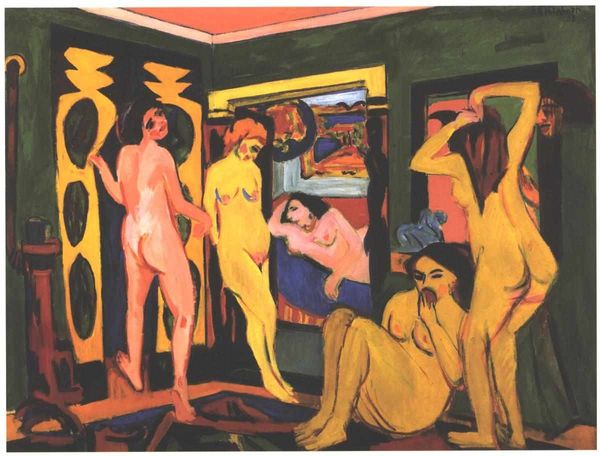
painting, oil-paint
#
painting
#
oil-paint
#
figuration
#
female-nude
#
naive art
#
genre-painting
#
nude
Copyright: Rafael Zabaleta,Fair Use
Editor: This is Rafael Zabaleta’s oil painting, “The Three Graces.” It features three nude women and almost has this kind of dream-like, surreal quality. I'm struck by how these women seem both idealized and very real. How do you interpret this work? Curator: This painting really brings up some interesting ideas around representation and the male gaze, doesn’t it? We’re meant to understand these figures as classical graces, but what happens when they are painted by a male artist with such…specificity? Consider how their bodies are rendered, how the 'naive art' style clashes with the classicising subject matter, and I think we can see a subtle critique of the objectification of women in art. Do you think that Zabaleta perhaps challenges that legacy through this work? Editor: That's a fascinating point! I hadn't really considered the contrast between the "naive" style and the classic subject matter. So, by portraying these figures in a less-than-idealized manner, he might actually be subverting the tradition of the nude in art? Curator: Precisely! And what about the painting within the painting, the artwork depicted on the easel behind them? That’s yet another layer commenting on the ways that we portray ourselves, and how complex it can be to escape existing tropes, especially those relating to women. Editor: That makes a lot of sense. I appreciate how you've placed this work within a broader dialogue of art history, while addressing contemporary theory about gender and identity. Curator: Art’s true value lies in sparking these kinds of crucial dialogues. Zabaleta offers a unique entry point, and the painting encourages viewers to see things differently and think critically. Editor: I definitely have a lot more to think about! Thanks so much.
Comments
No comments
Be the first to comment and join the conversation on the ultimate creative platform.
